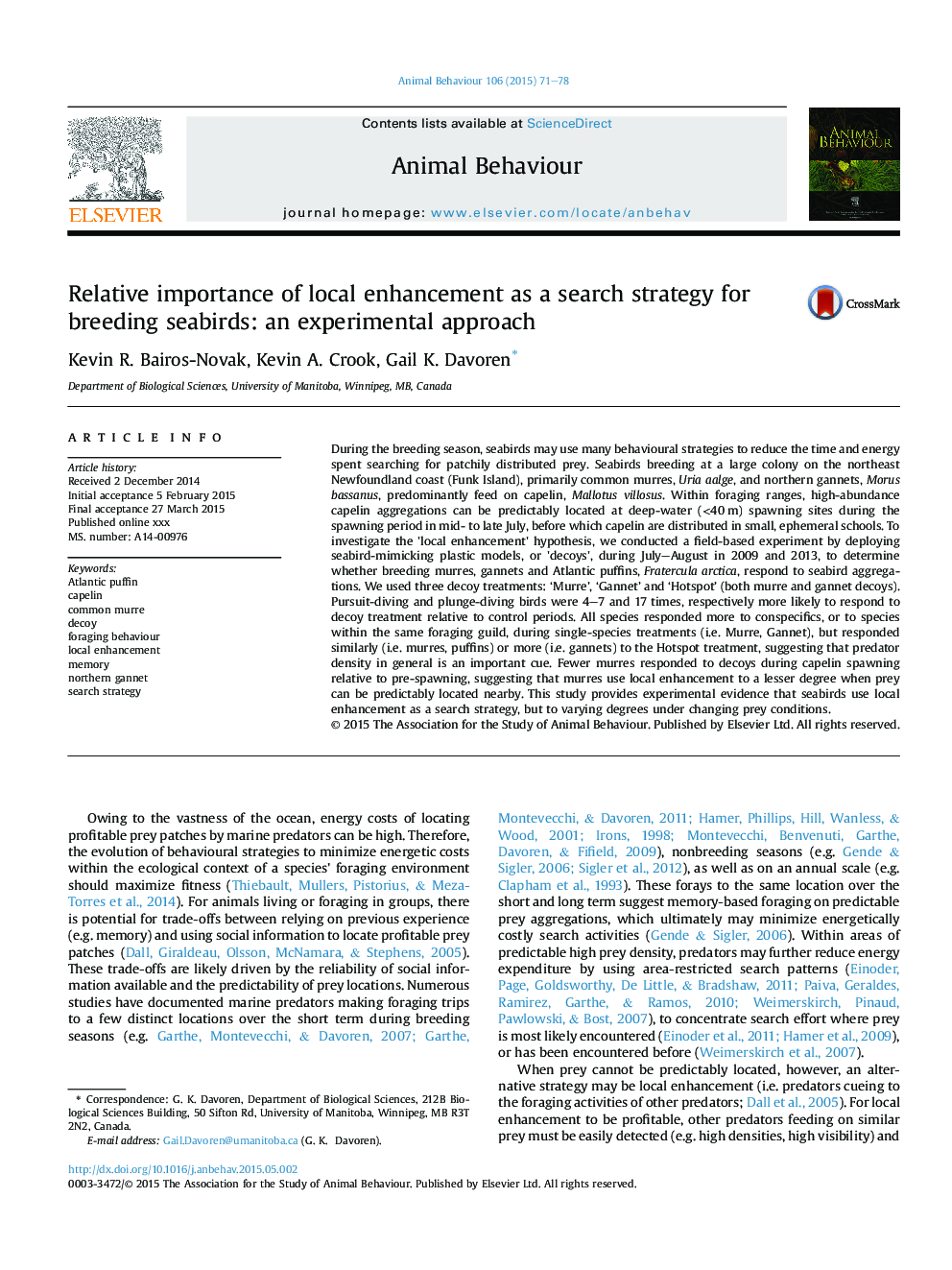| Article ID | Journal | Published Year | Pages | File Type |
|---|---|---|---|---|
| 8489740 | Animal Behaviour | 2015 | 8 Pages |
Abstract
During the breeding season, seabirds may use many behavioural strategies to reduce the time and energy spent searching for patchily distributed prey. Seabirds breeding at a large colony on the northeast Newfoundland coast (Funk Island), primarily common murres, Uria aalge, and northern gannets, Morus bassanus, predominantly feed on capelin, Mallotus villosus. Within foraging ranges, high-abundance capelin aggregations can be predictably located at deep-water (<40Â m) spawning sites during the spawning period in mid- to late July, before which capelin are distributed in small, ephemeral schools. To investigate the 'local enhancement' hypothesis, we conducted a field-based experiment by deploying seabird-mimicking plastic models, or 'decoys', during July-August in 2009 and 2013, to determine whether breeding murres, gannets and Atlantic puffins, Fratercula arctica, respond to seabird aggregations. We used three decoy treatments: 'Murre', 'Gannet' and 'Hotspot' (both murre and gannet decoys). Pursuit-diving and plunge-diving birds were 4-7 and 17 times, respectively more likely to respond to decoy treatment relative to control periods. All species responded more to conspecifics, or to species within the same foraging guild, during single-species treatments (i.e. Murre, Gannet), but responded similarly (i.e. murres, puffins) or more (i.e. gannets) to the Hotspot treatment, suggesting that predator density in general is an important cue. Fewer murres responded to decoys during capelin spawning relative to pre-spawning, suggesting that murres use local enhancement to a lesser degree when prey can be predictably located nearby. This study provides experimental evidence that seabirds use local enhancement as a search strategy, but to varying degrees under changing prey conditions.
Keywords
Related Topics
Life Sciences
Agricultural and Biological Sciences
Animal Science and Zoology
Authors
Kevin R. Bairos-Novak, Kevin A. Crook, Gail K. Davoren,
